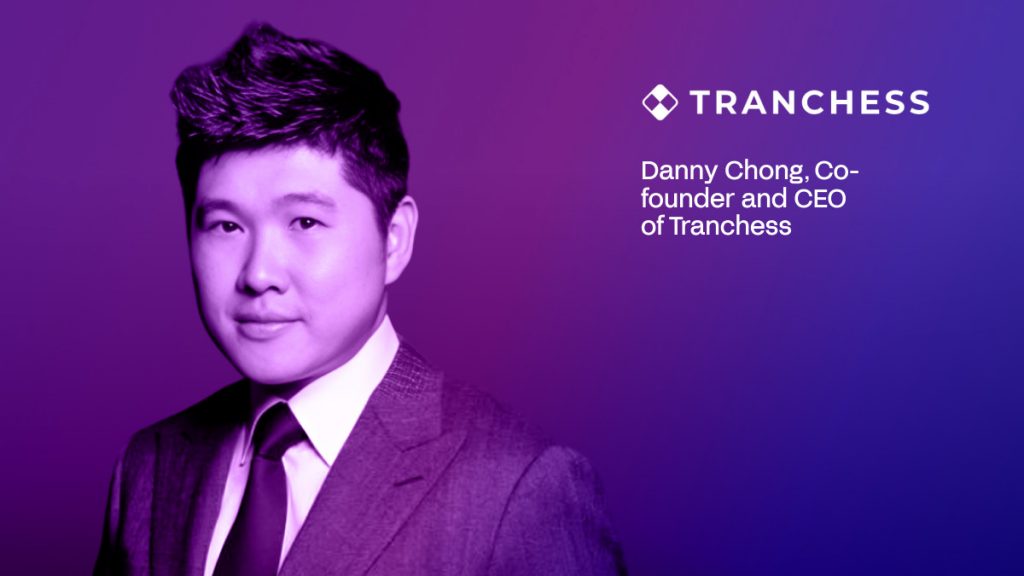Bridging Worlds: Danny Chong on Tranchess, Blockchain Interoperability, and Real-World Crypto Integration


In Brief
Danny Chong, CEO of Tranchess, discusses DeFi’s innovative landscape, cryptocurrency protocol growth, and expert predictions on blockchain technology’s future.

This time, Danny Chong, Co-founder and CEO of Tranchess, pays close attention to DeFi’s innovative landscape. He discusses the driving factors behind the growth of cryptocurrency protocols and his expert predictions on the future of blockchain technology.
What are the main factors driving the growth of cryptocurrency protocols?
The evolution of protocols has gone beyond people just copying each other’s code. The sophistication has evolved into staking and other methods of structured products for staking, like Tranchess. There are also new narratives beyond staking or restaking, such as AI and real-world assets. Importantly, we’ve seen ETFs coming in for Bitcoin and Ethereum.
It’s natural to imagine that even everyday people familiar with deposits will want to do something similar with their Ethereum, like staking it for validation rewards. The factors driving growth are, firstly, the evolution of DeFi itself and, secondly, investments coming in from the real world through ETFs. This leads to greater market capitalization for Ethereum, meaning more funds available for staking.
How do yield-enhancing protocols differ from traditional financial instruments?
In traditional finance, there’s a very extended and slightly complicated way of completing interest rate differentials. There are Treasury bonds of various tenors, instruments to hedge interest rate risk, overnight interest rate swaps, and more. The USD market and other currency markets are very well-established and mature.
In contrast, this level of sophistication for cryptocurrency is very new. There isn’t really even such a thing as a yield curve for most cryptocurrencies. There may be some simple one- or two-year products for certain tokens listed on exchanges or banks, but they are definitely not as mature and liquid as the current USD market.
How do you provide security for your solutions, especially considering recent huge security breaches in crypto?
From past examples, including the collapse of FTX and others, we know that most of the time, centralization or central management without proper controls or governance can lead to the failure of an institution. In terms of DeFi, the ethos is that if smart contracts are well-built and well-audited, there should be no flaws.
Most common hacks actually come from bridges between different chains. For protocols, it’s not so easy to break through unless there are critical flaws. One error I’ve seen protocols make is believing that established protocols are bug-free and copying their code entirely. People who exploit one protocol often find the same exploit works for others as well.
Most new protocols now realize the importance of multiple audits and bug bounties to ensure their codes are free from loopholes. This has improved over time, similar to how interbank transfers became more secure as they developed. While there are still flaws and hacks happening, the number and notional value of exploits should reduce over time.
What are the most effective strategies for attracting liquidity to yield-enhancing protocols?
To attract liquidity, you need both a critical amount of TVL and people bringing assets into the AMM LP pool. The key is to ensure there are enough incentives to promote the AMM LP pool and let users know they’ll get the highest returns for taking the risk.
For example, at Tranchess, we offer double points for people to put assets in our AMM pool. We also have additional airdrops to make rewards more attractive. Additionally, if there are high transactions in the AMM pool, there will be trading fees passed on to LP providers.
If you can generate enough interest in the protocol or project, your LP will generally earn good trading fees. The concept isn’t complicated – it’s about providing the right incentives for users to provide the dense liquidity that any protocol is looking for.
What factors have contributed most to the growth of cryptocurrency protocols recently?
Prior to the recent market downturn, there was good growth in terms of real-world demand. The Ethereum ETFs, both in Hong Kong and the USA, were attracting many users to invest in crypto assets.
The current theme is no longer just about raising money from within the crypto community but about attracting resources from the real world and improving user experience. Protocols have become much more user-friendly, looking more like trusted apps you’d use on an iPhone or computer.
People are realizing that to attract real-world users and institutions, you need good user experience, product quality, safety and security measures, and a good revenue stream. The smoothness of regulation, with many countries now approving ETFs and the narrative of tokenization of real-world assets, have all contributed to the growth of crypto in general.
What do you think were the main reasons for the recent drop in cryptocurrency prices?
It’s part of a broader macro picture. Recent events like the rise in Japanese interest rates and the lower-than-expected U.S. non-farm payrolls with a high unemployment rate of 4.3%, have created fears of a potential recession.
This mindset, combined with Japan’s rising rates, could signify a complex, inflation-filled world. It generates an unwinding sentiment for risky assets, including equities, tech stocks, and crypto markets. The current market seems to have had too much leverage involved, so when sentiment suddenly turned, many investors were caught long, leading to a rapid sell-off.
It’s something we see in many repeated cycles of crypto and financial markets. However, with the introduction of ETFs and the spread of crypto to different countries with favorable regulations, the long-term trend is still upward. This downturn could offer a good entry point for new investors.
What is your outlook on the future of interoperability between different blockchain protocols?
Interoperability between blockchains should be accepted as the norm, similar to how different train lines in a city connect to form a comprehensive network. As the space becomes more established, we’ll see more networks covering different areas – some for games, some for decentralized exchanges, some for structured products, and so on.
Ethereum might remain an all-in-one chain with various side chains, but they’ll all be part of the greater network. In the future, interoperability should be as seamless as crossing from one train platform to another. It shouldn’t be seen as a separate technology but as an integral part of how different blockchains interact.
What are your predictions for the adoption of zero-knowledge proofs to enhance privacy within crypto protocols?
Zero-knowledge concepts are good and have been around for quite a while. However, the real challenge lies in turning this concept into a practical product or harnessing it to verify identities and integrate it into different networks or user experiences.
So far, I haven’t seen a real product that allows for an applicable use of zero-knowledge proofs, nor have I seen wide adoption. The key will be finding ways to implement this technology in a way that’s user-friendly and solves real-world problems.
In your opinion, what do you think will be the state of blockchain in the next three years?
Blockchain will flourish quite a lot. One of the current limitations of blockchains is their low TPS rate compared to centralized exchanges. But this will change. With advancing technology, transactions will be faster, there’ll be more sidechains, and more seamless bridges between Layer1 and Layer2 solutions or between different chains.
This improvement will lead to a higher adoption of blockchain. If we believe in the overall growth of the crypto ecosystem, especially Ethereum, then we can expect a natural flourishing of users, protocols, and associated tokens over the next two to three years. What could really drive adoption is a definitive real-world use case.
For example, if some big conglomerates, regulators, or central banks decide to implement CBDCs on a blockchain, or if a major banking system decides to use blockchain for settlements. These could be huge drivers for increased adoption.
There are many potential possibilities and triggers that could make blockchain work really well. We just need one or more of these use cases to take off, and then the use and adoption of blockchain should grow massively.
Disclaimer
In line with the Trust Project guidelines, please note that the information provided on this page is not intended to be and should not be interpreted as legal, tax, investment, financial, or any other form of advice. It is important to only invest what you can afford to lose and to seek independent financial advice if you have any doubts. For further information, we suggest referring to the terms and conditions as well as the help and support pages provided by the issuer or advertiser. MetaversePost is committed to accurate, unbiased reporting, but market conditions are subject to change without notice.
About The Author
Victoria is a writer on a variety of technology topics including Web3.0, AI and cryptocurrencies. Her extensive experience allows her to write insightful articles for the wider audience.
More articles

Victoria is a writer on a variety of technology topics including Web3.0, AI and cryptocurrencies. Her extensive experience allows her to write insightful articles for the wider audience.

















































